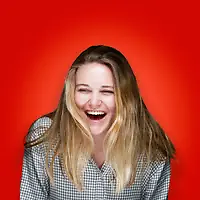October 28, 2024
 by Mary Clare Novak / October 28, 2024
by Mary Clare Novak / October 28, 2024

There is a time and place for spontaneity, but not when it comes to building an internal communications strategy.
Planning your business’s internal communication function poorly can lead to uninformed employees, low productivity, and miscommunication.
An internal communications strategy outlines the function of communication within an organization, along with the plan, objectives, and metrics that will guide employee action toward achieving personal and company-wide goals.
An internal communications strategy involves the processes and methods used to share information, messages, and feedback among employees and teams within an organization. It enables an internal flow of information to maintain engagement, alignment, and productivity among employees.
The effective use of internal communication software is essential to successfully implementing this strategy. By centralizing communication channels through tools for instant messaging, file sharing, and project management, organizations keep their workforce informed and engaged in real time.
Let's examine what it takes to create an internal communication plan that effectively improves business operations.
To best answer this question, we must first look at the benefits of internal communication.
Internal communication is responsible for the sending and receiving of information within an organization. A lot of information is shared in business, and keeping employees informed can’t happen without internal communication. However, it also serves other functions that some might not immediately realize.
So, why is an internal communication plan important? It makes all of the internal communication benefits possible by providing a clear framework of the goals, strategies, and tactics for everyone within the organization to follow.
Now that you know why you should care, let’s get down to business. Grab a cup of java, round up a few colleagues, and follow these steps to create a foolproof internal communication plan.
Take a good look at your current situation. More often than not, when businesses begin to construct an internal communication plan, they either aren’t getting the desired results with their current plan or don’t have a plan at all. Assessing the company's current situation and existing internal communication system is necessary for improvement.
When conducting a situation analysis, a couple of things need to be considered.
What is the organization's present situation?
What are the goals of the organization?
Why is this internal communication plan being created?
How are people currently communicating within the organization?
How will communication among employees help achieve the goals of the organization?
Answer all of these questions as thoroughly as possible. If you wish to improve your current situation, you must first understand it.
Tip: Evaluating your current situation is especially important when creating a crisis management plan. Make sure your internal communication between leadership and employees is strong when dealing with a crisis.
Communication theory tells us that two groups affect a message: the senders and the receivers. For a message to be effective, the sender must understand the receiver’s knowledge, communication skills, attitude, and background.
When defining how to communicate with a specific audience, you must first understand that specific group of people. Multiple audiences can exist within an organization, each with its own goals, mindsets, and preferences for communicating. Some groups might need to be targeted more heavily than others, some might prefer a certain communication channel, and some might require a little more background of the message’s topic. Either way, you should ask yourself these questions when considering the groups that will be affected by this internal communication plan.
What is my audience’s current mindset?
What do I want them to do as a result of this plan?
What is the best way to get my desired results from this audience?
Answering those questions will help you understand the best way to target your audiences. You can then adjust parts of your plan to tailor to their preferences.
Considering your audience is especially important when implementing conflict management strategies in the workplace. The relationship between the people involved and the conflict itself can affect which conflict management style is used.
Looking to add more flexibility to your plan? Learn how asynchronous communication supports scalable internal strategies.
Now that you understand your current situation and audience, it is time to set some goals.
When setting your internal communication plan goals, don’t forget to make them SMART.
| S - Specific (What are we actually doing?) |
| M - Measurable (How will you track success?) |
| A - Attainable (Is this goal reasonable?) |
| R - Relevant (Will this goal help us in the long run?) |
| T - Time-bound (When will the goal be met?) |
Before setting goals for your internal communication plan, you must consider the organization's goals. Once you understand those, consider how effective internal communication can help guide employees in achieving those goals. Here are some examples.

Establish your goals, and keep them in mind throughout the rest of the internal communication plan creation process.
Determining the strategies and tactics of your communication plan is arguably the most important part of the process. The goals have been set, but now we have to focus on how to achieve them.
Before we move on, we must differentiate strategies and tactics. A strategy is a long-term plan to achieve a goal, while a tactic is a concrete action taken to achieve that goal. The strategies and tactics for an internal communication plan will depend on the audience, content, and desired outcome.
Internal communication strategies break down how you will communicate with your audience(s). The tactics within the strategy include the specific messages you will send and the channels you will use. You must select a strategy before choosing the tactics for the internal communication plan. Understanding the strategy will help you choose the most appropriate tactics to complement it.
For example, if one of your strategies is to keep everyone up to speed on new office policies, a tactic for that strategy would be to keep the information updated in your company's intranet.
This is where the action happens.
Once you have decided on a strategy to follow and tactics to implement, put them to good use. Use the internal communication strategies and their coordinating tactics to share information amongst the people in your business. If your strategies and tactics are chosen carefully, this should go off without a hitch.
Each piece of internal communication acts as a form of internal marketing. Make sure your messages reflect not only the plan but also the company culture.
Evaluating the progress of the internal communication plan directly correlates to your SMART goals. To determine if your plan was effective, ask yourself these questions.
Was our specific goal reached, or did we achieve something else?
Did we get the measurable results we wanted?
Did we attain what we wanted, or was it too far out of reach?
Are these results relevant to the objectives of the business?
Did we reach our goal by the time we suggested?
Hearing from the team is necessary when evaluating the progress of your plan. Distribute a survey in your employee newsletter to get some feedback. Everybody in a business communicates, and getting comments and criticisms from all levels and across all teams is necessary for effective leadership communication.
If you are disappointed in the results of your internal communication plan, change it. If a specific tactic didn’t send a message as well as you expected, choose a different one. If you chose the wrong strategy for a particular audience, go about communicating with them another way. If your team easily surpasses your goals, aim higher.
Simply accepting that your plan performed well or didn’t isn’t the right attitude. No matter your results, find the right ways to improve them.
Strengthen your communication workflows. Explore the best CPaaS platforms for seamless, real-time collaboration across teams.
Organizations must be prepared to respond swiftly and effectively to crises. A well-defined crisis communication plan is a critical component of an internal communications strategy, ensuring that employees are informed, supported, and engaged during challenging times.
Here’s how to create an effective crisis communication plan:
After a crisis has passed, conduct a thorough evaluation of the communication response. What worked well? What could be improved? Gather input from the crisis communication team and employees.
Use insights from the evaluation to refine the crisis communication plan. This continuous improvement cycle ensures that your organization is always prepared for future crises.
Looking for the right tools to support your internal comms strategy? Learn how unified communications platforms simplify messaging, voice, and video.
By implementing these best practices, organizations can enhance their internal communications, resulting in improved employee morale, increased productivity, and better alignment with business objectives.
There are many different ways to communicate in the workplace, but no matter which one you use, follow these etiquette tips to be heard without being offensive.
A business cannot survive without effective internal communication, and roughing it is not the way to go. Creating an internal communication plan will ensure an informed workforce that can better work towards the goals of the company.
Check out our resource on the best internal communication methods and the role they play in business.
This article was originally published in 2019. It has been updated with new information.
Mary Clare Novak is a former Content Marketing Specialist at G2 based in Burlington, Vermont, where she is explored topics related to sales and customer relationship management. In her free time, you can find her doing a crossword puzzle, listening to cover bands, or eating fish tacos. (she/her/hers)
First time leading a meeting? We’ve all been there.
 by Mary Clare Novak
by Mary Clare Novak
The generational divide in our society has never been more evident than it is today.
 by Jessica Ruane
by Jessica Ruane
Think about the last time you failed at work. What are the chances you could have avoided that...
 by Lauren Pope
by Lauren Pope
First time leading a meeting? We’ve all been there.
 by Mary Clare Novak
by Mary Clare Novak
The generational divide in our society has never been more evident than it is today.
 by Jessica Ruane
by Jessica Ruane


